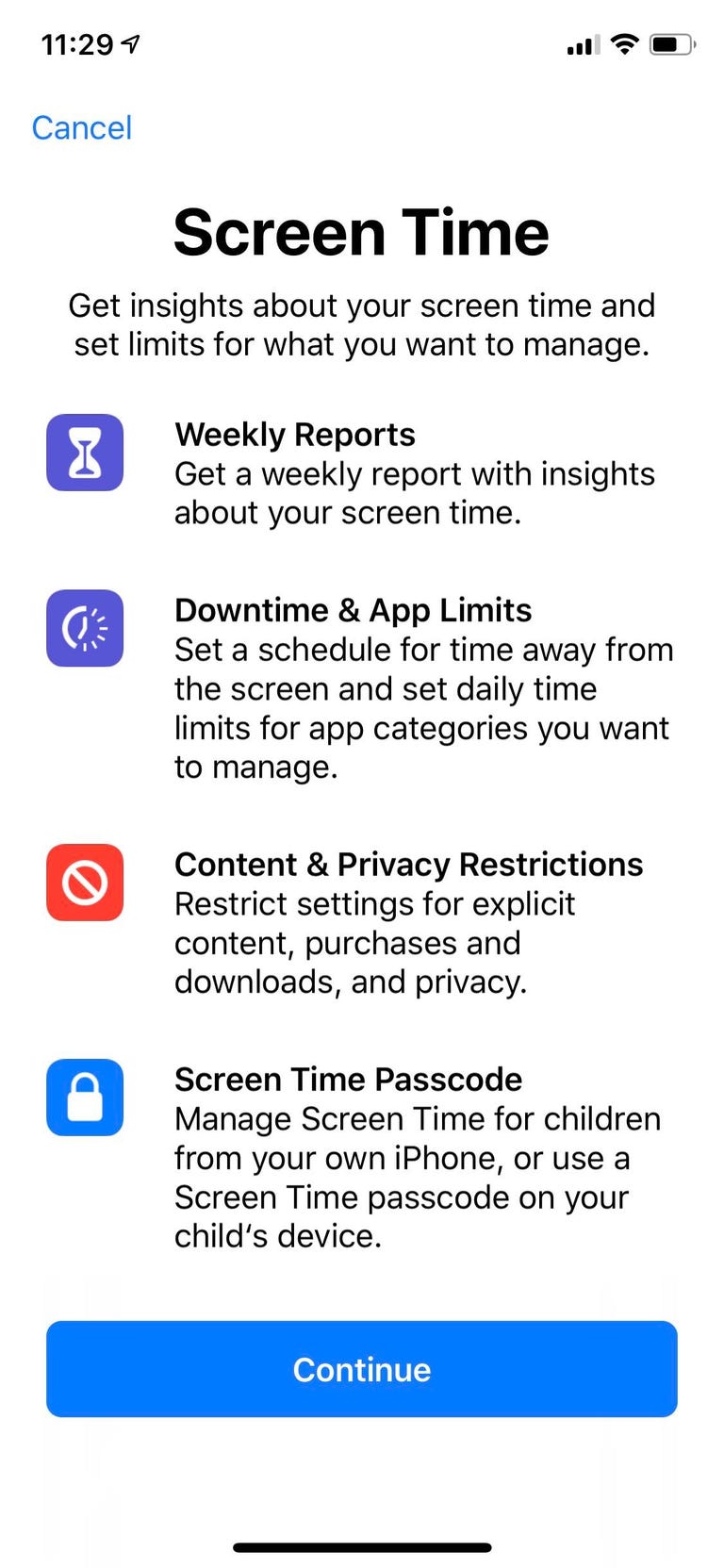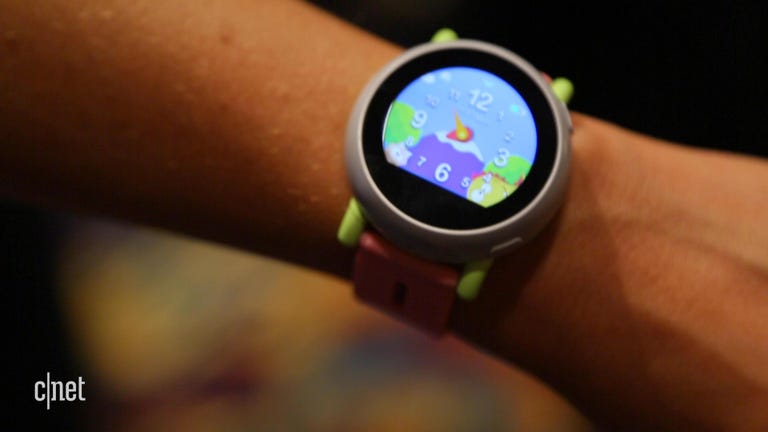In this digital era, where smartphones have become an integral part of our lives, ensuring your child’s safety and well-being while using their iPhone is paramount. Just like guiding them through life’s various challenges, navigating their digital world requires attention and awareness. As a parent, you play a crucial role in implementing measures that promote a healthy balance between screen time and other activities.
At AnyTimeSoftcare.com, we understand the concerns surrounding children’s smartphone usage. iPhones, although incredibly innovative and useful, can pose challenges, especially when it comes to managing usage among younger users. Recognizing this, Apple has taken steps to address these issues, introducing features like Screen Time with iOS 12.
You are watching: 7 parental controls you can use right now on your kid's iPhone
With Screen Time, parents now have a powerful tool at their disposal to set limits on app usage, establish downtime periods to promote healthy breaks, and enhance privacy settings to safeguard their children from explicit content. Let’s explore seven practical parental controls that you can leverage today to create a safer and more balanced digital environment for your child.
Setting Screen Time Limits for Your Child
Once your child is added to Family Sharing, you can take control by setting Screen Time limits. Navigate to Settings > Screen Time to establish rules for your child’s iPhone usage. You have the flexibility to manage Downtime, App Limits, and Content & Privacy Restrictions. A weekly report will keep you informed about how frequently your child accesses their iPhone each day and the duration spent on each app. Furthermore, you can monitor their daily or weekly usage from your own iPhone through Screen Time under Settings. This comprehensive guide will assist you in configuring Screen Time effectively.
Below, you’ll find an illustration of how to set it up:
Once Downtime and App Limits are configured, you will proceed to the Content & Privacy Restrictions section, which encompasses various settings. Let’s delve into these sections, starting with Allowed Apps:
| Allowed Apps: | Customize the list of apps your child can access. |
| Content Restrictions: | Filter websites and other content based on your child’s age. |
| Privacy Restrictions: | Manage permissions for apps to access location services, contacts, etc. |
By intricately configuring these settings, you can ensure a safe and balanced digital experience for your child. Remember, effective Screen Time management is key to fostering healthy technology habits from a young age.
Disable certain apps
When setting up Content & Privacy Restrictions, you have the option to manage the apps your child can access. This feature enables you to control and customize your child’s device usage effectively. Here’s a step-by-step guide on how to manage these settings:
- Toggle on Content & Privacy Restrictions at the top of the screen.
- In the Allowed Apps section, you can toggle off specific apps that you prefer your child not to use. For instance, if you wish to restrict access to Safari, the internet, or the camera for FaceTime, you can easily do so here.
- Under iTunes & App Store Purchases, you can restrict your child from installing or deleting apps and making in-app purchases.
See more : Americans text more than they talk
By following these simple steps, you can create a safer and more tailored digital experience for your child, ensuring they engage with content that aligns with your preferences and values.
Content Restrictions
When managing your child’s device usage, it’s crucial to set up Content Restrictions effectively. This feature allows you to control what type of content your child can access, ensuring a safe and age-appropriate digital environment.
Setting Content Restrictions
Within the Content Restrictions settings, you have the ability to block certain types of content, such as R-rated movies, TV-MA shows, explicit music, podcasts, and apps. This empowers you to tailor the digital experience based on your child’s age and maturity level.
Customizing Website Access
For websites, consider choosing between options like Limit Adult Content or Specific Websites Only. The latter is particularly helpful for younger children, allowing you to handpick approved sites while maintaining a safe browsing environment.
Personalized Filters
Moreover, you can further personalize the restrictions by selecting specific websites from a curated list and even adding your own URLs. This granular control ensures that your child interacts only with content that aligns with your family values and guidelines.
Enhancing Digital Safety
By utilizing Content Restrictions effectively, you not only safeguard your child from inappropriate content but also promote responsible digital habits. It fosters a healthier relationship with technology and encourages balanced screen time.
Privacy Settings
Managing privacy settings on your child’s devices is crucial in today’s digital age. In the Privacy section, you have the ability to control settings such as Location Services and Share My Location. By ensuring these settings cannot be easily disabled, you can better monitor your child’s whereabouts and overall online safety.
Another essential aspect to review is the access granted to apps in the Photos section. While popular apps like Instagram, Facebook, and Pinterest may be familiar and acceptable to you, it’s important to inspect any unfamiliar apps that have photo access. This presents an opportunity to engage in meaningful conversations with your child about the implications of sharing photos online and how digital footprints are permanent.
Key Steps for Privacy Management:
- Regularly review and adjust Location Services and Share My Location settings.
- Check app permissions for photo access, especially with unfamiliar apps.
- Initiate open dialogues with your child regarding online safety and privacy.
- Stay informed about the latest trends in digital security and privacy protection.
See more : Apple's Maps gets update, complete with Transit addition
By proactively managing privacy settings and fostering communication with your child, you can create a safer and more secure online environment for your family. Remember, staying vigilant and informed is key to navigating the ever-evolving digital landscape responsibly.
Prevent Changes
In the section titled Allow Changes, you have the option to restrict your child from altering various settings, such as the passcode and data plan. It is crucial to ensure that the setting for Do Not Disturb While Driving remains enabled and unchanged, especially for iPhone users who are of driving age. This feature promotes safe driving habits and minimizes distractions while on the road.
Ask to Buy
Once you have configured the Screen Time settings on your child’s iPhone, proceed to your own iPhone. Navigate to Settings > [Your Name] > Family Sharing. Ensure that Ask to Buy is activated for your children listed in this section. (For children aged 12 and below, Ask to Buy is automatically activated.) By enabling this feature, you will receive notifications on your iPhone to authorize or reject suggested App Store transactions.
Location Sharing
Within the realm of Family Sharing, explore the Location Sharing option nestled in the Shared Features section, ensuring that it remains activated. Enabling this feature allows you to utilize the Find My Friends application to conveniently pinpoint the whereabouts of your child who carries an iPhone. This functionality proves useful in scenarios where getting a response to a call or message becomes challenging.
Originally introduced on Jan. 12, 2018, an update on Jan. 10, 2019, incorporated valuable insights concerning Screen Time controls.
iPhones have become an integral part of our daily lives, similar to how cigarettes were addictive to people in the past. Apple has acknowledged the concerns about phone addiction, especially among younger users, and has taken steps to address this issue. With the introduction of Screen Time features in iOS 12, parents now have tools to manage and monitor their kids’ iPhone usage effectively.
FAQs
-
What is Screen Time on iPhones?
Screen Time is a feature on iPhones that allows users to set limits on their phone usage, particularly useful for parents monitoring their children’s screen time. -
How can I set Screen Time limits for my child?
To set Screen Time limits for your child, go to Settings > Screen Time and configure rules for app usage, downtime, and content restrictions. -
What are the benefits of using Screen Time?
Screen Time helps in managing phone addiction, promoting healthy digital habits, and protecting children from accessing inappropriate content. -
Can I disable specific apps with Screen Time?
Yes, you can disable certain apps by setting up Content & Privacy Restrictions in the Screen Time settings. -
How can I restrict content on my child’s iPhone?
You can prevent your child from accessing explicit content by adjusting the Content Restrictions settings within Screen Time. -
What privacy settings can I control through Screen Time?
Screen Time allows you to manage privacy settings like Location Services, photo access, and prevent changes to critical device settings. -
How does Ask to Buy feature work in Family Sharing?
Ask to Buy enables parents to approve or decline app purchases made by their children through notifications on their own devices. -
What is Location Sharing in Family Sharing?
Location Sharing allows parents to track their child’s whereabouts using the Find My Friends app within Family Sharing settings. -
How can Screen Time help in promoting healthy digital habits for kids?
By setting limits on app usage and content access, Screen Time encourages balanced screen time and responsible online behavior. -
Are there any updates to Screen Time controls?
Apple continues to enhance Screen Time features to provide better control and monitoring options for users.
Summary
In conclusion, managing your child’s iPhone usage with Screen Time features is essential for promoting healthy digital habits. By setting appropriate limits, restrictions, and privacy controls, parents can ensure a safe and balanced online experience for their children. Take advantage of Screen Time tools to monitor usage, restrict content, and track locations, promoting responsible device usage. Embrace technology responsibly and empower your kids to navigate the digital world securely.
For more information and detailed guidance on setting up Screen Time controls, visit our website and take control of your family’s digital well-being today.
Source: https://anytimesoftcare.com
Category: Internet


